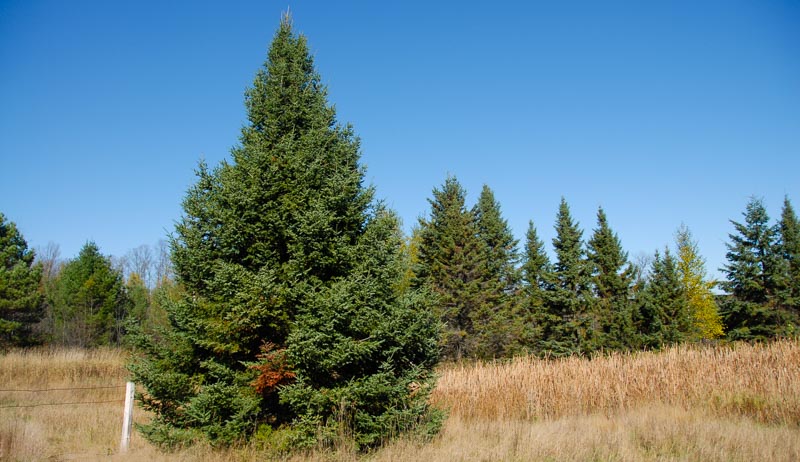
In my home state of Wisconsin, a wide variety of trees populate the forests. There are plenty of deciduous or “hardwood” trees with broad leaves—maples, oaks, basswoods, ash, you name it—but alongside those are many coniferous trees (also called “softwood”) with needles, such as pines and spruce.
Because the previous owners of my farm apparently loved coniferous windbreaks—planting conifers in rows to shelter the buildings from the wind—I have a lot of experience working with and around these trees. In addition, coniferous trees relish full sun, which means that they frequently appear on the edges of fields, where they can grow at impressive speeds until they dominate the area. Trimming them back and keeping them under control is one of my ongoing tasks.
If you’re also looking to tame crazy conifers on your farm, here are a few thoughts to keep in mind.
1. Coniferous Trees Grow Incredibly Fast
I can’t emphasize this enough—in the right conditions, coniferous trees can grow at an unbelievable rate of speed. In the span of 20 years, one can grow from a sapling barely three feet tall to a spreading specimen towering 30 feet above the ground, with long branches so heavy they sag and touch the ground under their own weight. If coniferous trees start popping up in less-than-ideal locations, don’t delay in cutting them down. In the blink of an eye, they can become a much bigger nuisance.
2. Live Growth Is Easier To Prune …
When possible, I like to prune coniferous trees when the lower branches are still alive. As the trees grow taller and start shading their own lower branches, these sun-starved parts of the tree die off and become hard, brittle and sharp (so don’t hurt yourself). In fact, sometimes I believe it would be easier to saw through a rock than a dead pine branch. It’s significantly easier to cut through live branches, which are more flexible and softer too—a good pair of pruning loppers can cut through branches an inch or slightly more in diameter.
3. … But Branches Are Lighter When They’re Dry
On the other hand, live pine branches can be quite moist (even leaking pine sap while you work) and can be pretty heavy as a result. It takes some effort to lift a freshly cut pine branch 10 or 12 feet long, but once the same branch has dried out, it weighs much less. Ideally, it would make sense to prune live branches and then leave them to dry before disposing of them, but of course this isn’t always practical.
4. Trimming Low Branches Makes a Big Difference
What do you do if these coniferous trees have grown to large heights with trunks a foot thick? You could embark on a full-scale logging operation to remove the trees, but if they’re not in a particularly troublesome location, consider trimming off the lowest branches to a height of eight or 10 feet. Tidying up the lower branches (some of which are probably dead anyway) can dramatically improve the aesthetic appearance of the trees and make working around them (and walking under them) much easier. In fact, when pruned in this manner, a row of coniferous trees can have a stately appearance.
Keep these tips in mind, and you should be able to keep these eager-to-grow trees from taking over your farm. Just the same, given how fast they grow, I can’t guarantee anything.




